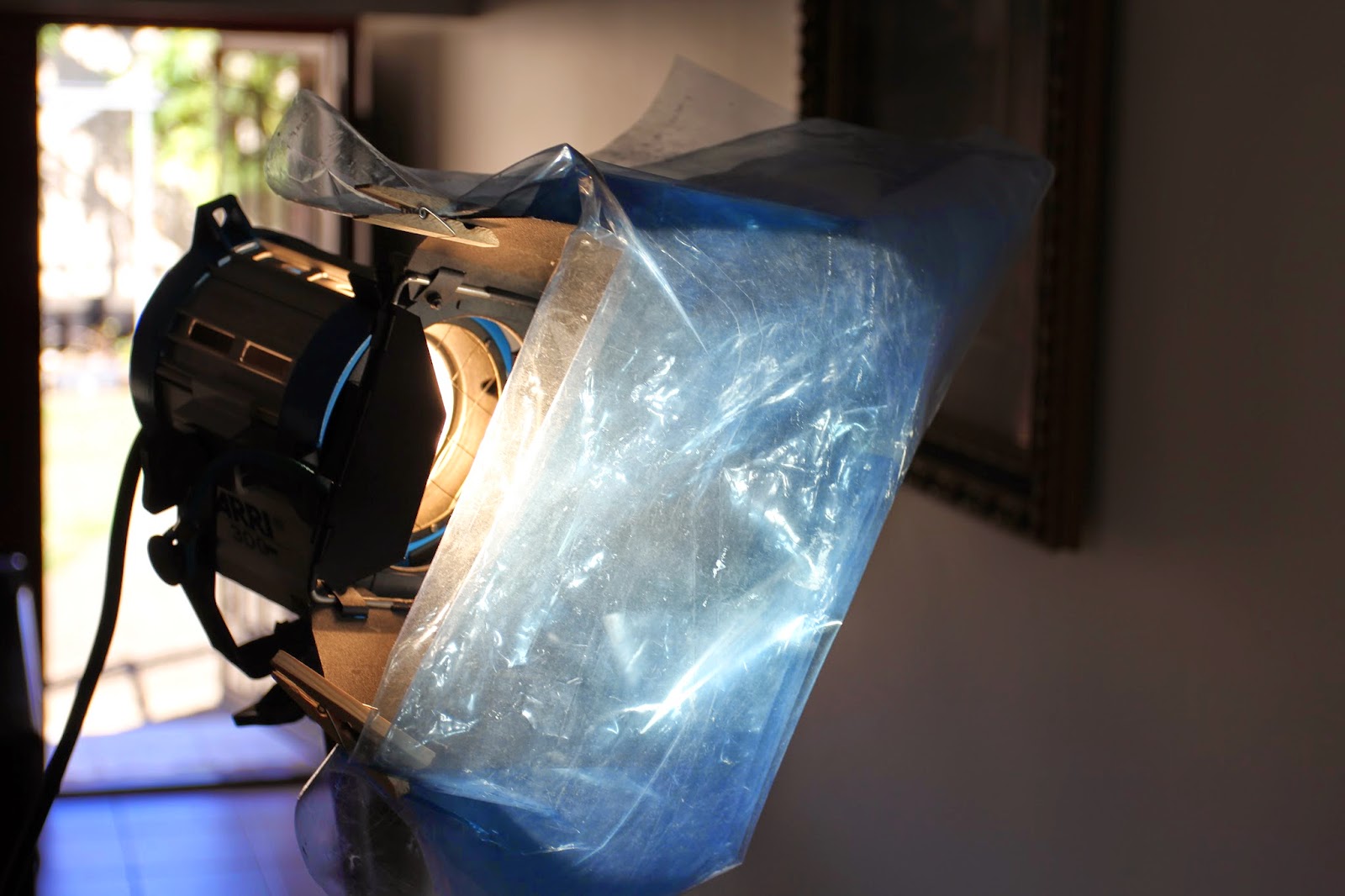When it comes to movies most people know what a director is, what an actor does and maybe even the role of a cinematographer but if you asked them what a Gaffer does they'd probably ask if you're talking about the type of tape (though that may indeed be where the role got its name from).

The Gaffer is in charge of the lighting of a film. Depending on the size of the crew the Gaffer may have an assistant know as the Best Boy (yes that really is the title) and more underlings called electricians. Gaffers work under the Director of Photography and alongside the Grips to rig up lights for the scenes of the film they're working on; the production I was working was small so I acted as both Gaffer and Grip.
 As the gaffer I'm basically in charge of controlling the sun (sorry, just needed to feed the old ego). But in all seriousness we use various lights and light manipulating items to expose a scene, create a mood and realistically depict natural lighting in unnatural environments. For High Heels I worked with the Director of Photography to get the colour temperature and quality of light they were after. High Heels is a comedy with dramatic sensibilities so we went for very natural looking lighting and did our best not to exaggerate anything.
As the gaffer I'm basically in charge of controlling the sun (sorry, just needed to feed the old ego). But in all seriousness we use various lights and light manipulating items to expose a scene, create a mood and realistically depict natural lighting in unnatural environments. For High Heels I worked with the Director of Photography to get the colour temperature and quality of light they were after. High Heels is a comedy with dramatic sensibilities so we went for very natural looking lighting and did our best not to exaggerate anything.There are many different types of lights used on film sets so I'll talk about the ones I used. Let's start with the big one, the HMI.
The HMI is a rather large and powerful light that is used to imitate daylight. This was used for several living room scenes; I'd set it up outside and shine it through the window. Someone I met who worked on the film 'Mental' said they used these lights when shooting in a forest that was a too dark so they rigged them to trees to light up the location.
Fluorescent lights were the most used on set, mostly because they were a favourite of the DOP. With Fluorescents you're able to switch between daylight and tungsten bulbs (tungsten is the colour of the light bulbs that were used before fluorescents took over house lights); you can also dim them which is very handy. Most of the time we covered them in half grid cloth to soften the light and reduce the intensity.
LED lights are a personal favourite of mine. They're light (depending on size of course), they don't heat up, you can dim them and they can run on batteries. The LEDs I got to use on High Heels could also change colour temperature which was also really handy. LEDs tend to be rather soft so depending what quality of light you want that can be an issue. For High Heels they were mainly used as fill lights or to act as lighting from a TV or computer screen.
The 300 watt Fresnel light was also used on set. We actually had a kit with 650 watt lights and a 1K (1000 watt) but we only ended up using the 350 watt. These light are tungsten and also heat up quite a bit (gloves are a must). I love the quality of light you get from these but they can be rather cumbersome, but the heat does keep you warm in the winter (which is the current season in Australia). Though they are tungsten you can change the colour temperature with coloured gels to make them daylight or various other colours.
There were also practical lamps used on set though we would combine them with other lights for correct exposure as they were not powerful enough.







No comments:
Post a Comment